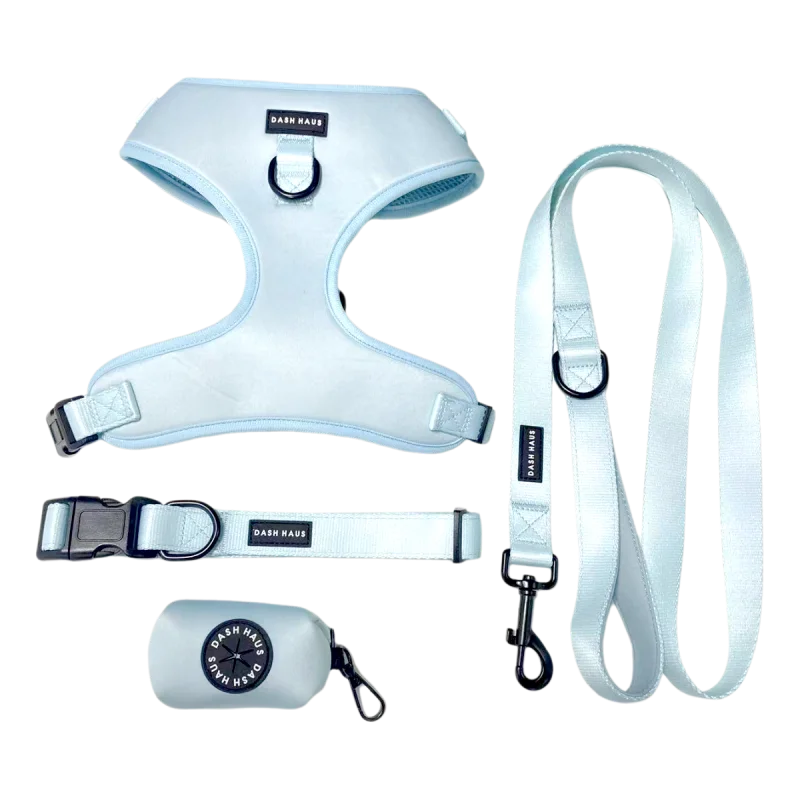As pet owners, we all want the best for our furry friends. One of the most debated topics in pet care is whether to use a dog harness or a traditional collar. With countless options available on the market, understanding the benefits and drawbacks of each can help you make an informed decision for your business and your customers. In this blog, we’ll explore expert opinions on dog harnesses, examining their advantages, disadvantages, and when they may be the best choice for dogs.
Understanding Dog Harnesses
Before diving into the pros and cons, it’s crucial to understand what dog harnesses are and how they differ from traditional collars. A dog harness is a piece of equipment that fits around a dog’s body, usually securing at the chest and back. This design allows for better control and distributes pressure more evenly than collars.
Types of Dog Harnesses

There are several types of dog harnesses available, each designed for specific needs:
- Back-Clip Harnesses: These harnesses have a clip on the back for attaching a leash. They are generally easy to put on and take off and are suitable for dogs that do not pull excessively.
- Front-Clip Harnesses: These harnesses feature a clip on the front of the chest, which helps redirect a dog’s attention back to the owner when they pull. They are particularly effective for training dogs to walk politely on a leash.
- No-Pull Harnesses: Designed specifically to discourage pulling behavior, these harnesses often have additional features that help control movement without causing harm.
- Vest Harnesses: These provide full coverage around the dog’s torso and are often padded for comfort. They are ideal for small or sensitive dogs.
Understanding these types will help you choose the right harness based on your customers’ needs.
Benefits of Using Dog Harnesses
Reduced Strain on the Neck
One of the primary advantages of using a dog harness is that it reduces strain on a dog’s neck. Traditional collars can apply pressure directly to the neck, which can be harmful, especially for small breeds or those with pre-existing health conditions like tracheal collapse.
Research indicates that dogs wearing collars may experience musculoskeletal injuries due to excess pressure on their necks. A study found that dogs tend to pull more strongly when restrained by a collar compared to a harness, suggesting that harnesses can alleviate some of this strain. Harnesses distribute pressure more evenly across the dog’s chest and back, minimizing the risk of injury. This is particularly important for brachycephalic breeds (like Bulldogs or Pugs) that already have compromised airways.
Improved Control and Safety
Harnesses also provide better control over dogs compared to collars. For larger or more energetic breeds, having control during walks is essential for both safety and training. A well-fitted harness allows handlers to guide their dogs more effectively without risking injury to themselves or their pets.
A study involving 66 domestic dogs assessed how different harness designs impacted canine locomotion. It was found that certain designs could influence how dogs moved while wearing them. This highlights the importance of selecting a well-designed harness that allows for natural movement while providing control.
Many harnesses come equipped with safety features such as reflective materials for visibility during nighttime walks or locking buckles that prevent accidental escape. This added security can be crucial for dogs that tend to bolt or those who may be easily distracted by their surroundings.
Comfort for Active Dogs
For active dogs who enjoy outdoor activities like hiking or running, comfort is key. Many modern harnesses are designed with padded straps and breathable materials, ensuring that dogs remain comfortable during extended periods of wear. This is especially beneficial in warmer weather when overheating can be a concern.
Experts recommend choosing a harness that fits snugly but allows for freedom of movement in the shoulders and legs. A comfortable harness can make outdoor adventures more enjoyable for both pets and their owners.
Drawbacks of Dog Harnesses
While there are many benefits to using dog harnesses, there are also some drawbacks to consider.
Potential Gait Issues
One concern raised by veterinarians and trainers is that certain types of harnesses can restrict shoulder movement if not designed properly. For example, T-shaped harness designs may limit the natural gait of some dogs, particularly larger breeds still developing their muscle structure.
Dr. Christine Zink, a veterinarian specializing in canine sports medicine, has observed that no-pull front-clip harnesses can alter a dog’s gait by placing pressure on key tendons in their forelimbs. If a dog pulls excessively while wearing an ill-fitting or restrictive harness, it could lead to long-term issues with their gait or posture. Therefore, it’s essential to select a harness that allows full range of motion in the shoulders while still providing control.
Training Dependency
Another potential drawback is that relying solely on a harness may create dependency without addressing underlying behavioral issues. While harnesses can help manage pulling behavior, they should not replace proper leash training.
Experts emphasize that training should accompany the use of a harness to foster good walking habits in dogs. Teaching commands like “heel” or “leave it” can help reinforce positive behaviors while using a harness effectively.
Fit and Adjustment Challenges
A poorly fitted harness can cause discomfort or even injury to dogs. It’s crucial to ensure that any harness chosen fits properly and allows for adjustments based on each dog’s size and shape.
When selecting a harness, consider factors such as:
- Size: Measure your dog’s chest girth and neck circumference to find an appropriate size.
- Adjustability: Look for adjustable straps that allow you to customize the fit.
- Material: Choose durable materials that won’t chafe or irritate your dog’s skin.
Taking these factors into account will help prevent any negative experiences associated with wearing a harness.
Expert Opinions
To gain further insight into this topic, we consulted various veterinarians and professional dog trainers who shared their thoughts on using dog harnesses.
Dr. Emily Johnson, a veterinarian specializing in canine behavior, notes: “Harnesses can be incredibly beneficial for many dogs, especially those prone to pulling or those with neck issues. However, it’s essential to choose the right type based on individual needs.”
Professional dog trainer Mike Thompson emphasizes the importance of training alongside using a harness: “While a no-pull harness can help manage pulling behavior, it should not be viewed as a solution by itself. Consistent training is key to teaching dogs how to walk politely.”
Additionally, Dr. Sarah Lee points out: “The right fit is crucial when selecting a harness. An ill-fitting one can cause discomfort or even lead to injuries over time.”
These expert insights highlight the importance of considering both individual needs and training when deciding whether to use a dog harness.
Conclusion
In summary, dog harnesses can be an excellent choice for many dogs due to their ability to reduce strain on the neck, improve control during walks, and provide comfort during physical activities. However, potential drawbacks such as gait issues, training dependency, and fitting challenges must also be considered.
When choosing between a collar and a harness, it’s essential to assess each dog’s specific needs—considering factors such as breed size, activity level, and any existing health concerns. Consulting with veterinarians or professional trainers can provide valuable guidance in making this decision.
Ultimately, whether you opt for a collar or a harness should depend on what works best for both you and your furry friend. By understanding both sides of this debate and taking expert advice into account, you can ensure that your pet enjoys safe and comfortable walks while fostering good behavior along the way.
Call to Action
Whether you choose collars or harnesses for your wholesale offerings at Wedogy—prioritizing comfort and safety will lead to happier pets and satisfied customers!




